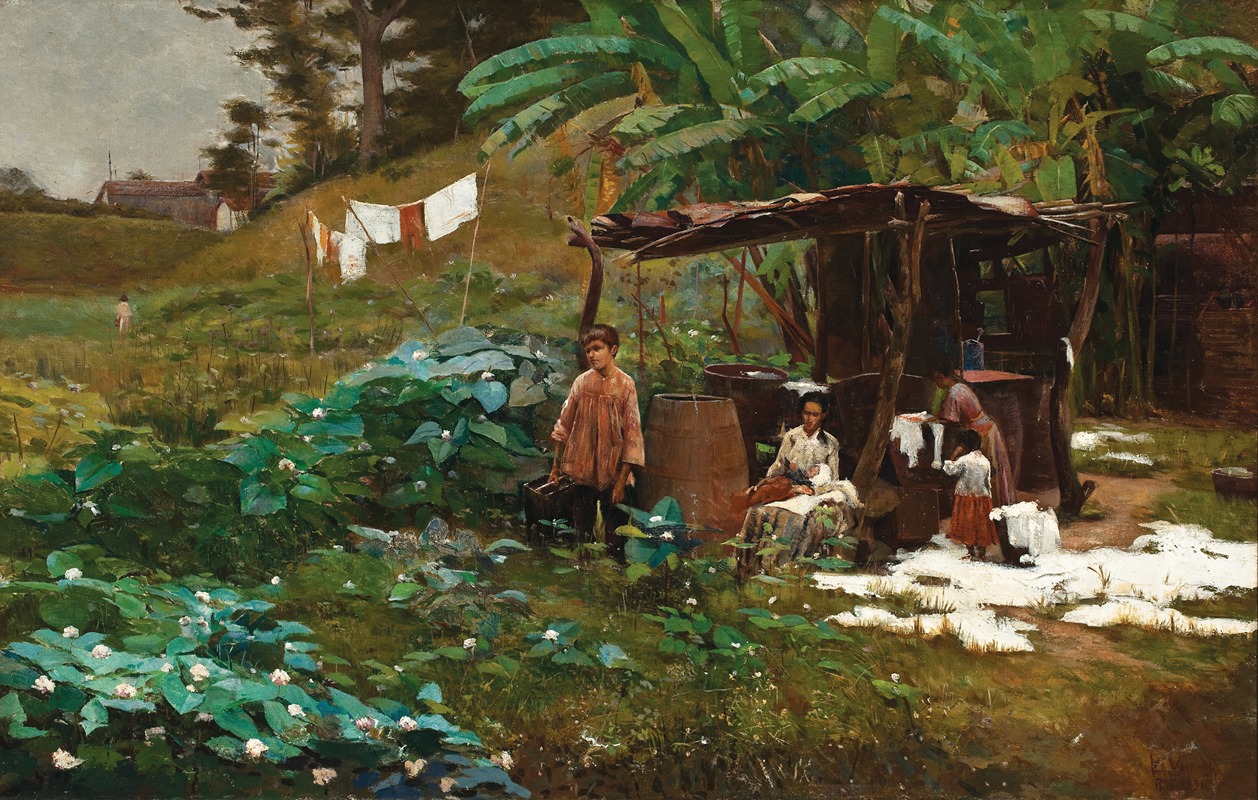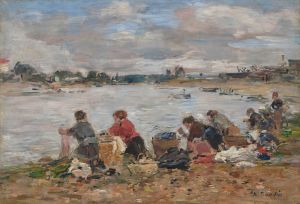
As lavadeiras
A hand-painted replica of Eliseu Visconti’s masterpiece As lavadeiras, meticulously crafted by professional artists to capture the true essence of the original. Each piece is created with museum-quality canvas and rare mineral pigments, carefully painted by experienced artists with delicate brushstrokes and rich, layered colors to perfectly recreate the texture of the original artwork. Unlike machine-printed reproductions, this hand-painted version brings the painting to life, infused with the artist’s emotions and skill in every stroke. Whether for personal collection or home decoration, it instantly elevates the artistic atmosphere of any space.
As Lavadeiras (The Washerwomen) is a painting by the Brazilian artist Eliseu Visconti, one of the most prominent figures in Brazilian art during the late 19th and early 20th centuries. Painted in 1905, this work exemplifies Visconti's engagement with Impressionism, a style he encountered and embraced during his studies in Europe. The painting is celebrated for its delicate treatment of light and color, as well as its depiction of everyday life in Brazil.
The artwork portrays a group of women washing clothes by a river, a common scene in rural and urban Brazil during that period. The composition captures the natural environment with a focus on the interplay of light and shadow, characteristic of Impressionist techniques. Visconti's use of soft brushstrokes and a vibrant yet harmonious color palette brings a sense of movement and vitality to the scene. The figures of the washerwomen are integrated into the landscape, emphasizing their connection to nature and their role in the rhythms of daily life.
Eliseu Visconti was born in Salerno, Italy, in 1866 and immigrated to Brazil with his family as a child. He studied at the Imperial Academy of Fine Arts in Rio de Janeiro before continuing his education in Paris, where he was influenced by the Impressionist and Symbolist movements. Upon returning to Brazil, Visconti became a key figure in modernizing Brazilian art, blending European techniques with local themes and subjects.
As Lavadeiras reflects Visconti's ability to adapt European artistic innovations to Brazilian contexts. The painting not only showcases his technical skill but also provides a glimpse into the social and cultural fabric of early 20th-century Brazil. The washerwomen, engaged in their labor, represent a moment of communal activity and highlight the importance of such tasks in everyday life.
Today, As Lavadeiras is considered an important work in Visconti's oeuvre and a significant example of Brazilian Impressionism. The painting is held in the collection of the Museu Nacional de Belas Artes (National Museum of Fine Arts) in Rio de Janeiro, where it continues to be appreciated for its artistic and historical value.

















